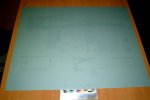Is there any advantages of using chemistry free plates Kodax, Fuji or agfa?
what are the advantages?
will they have any effect on press rollers life?
do the plates scratch easy?
whats the effect on jobs that get reordered time and time again?
how many more make ready sheets will it take to to clean off plates?
do some papers take longer than others to clean up the plates?
Is there a big difference in pricing compared to processing plates?
if anyones has any input I would greatly appreciate it?
Let me know,
Thanks
what are the advantages?
will they have any effect on press rollers life?
do the plates scratch easy?
whats the effect on jobs that get reordered time and time again?
how many more make ready sheets will it take to to clean off plates?
do some papers take longer than others to clean up the plates?
Is there a big difference in pricing compared to processing plates?
if anyones has any input I would greatly appreciate it?
Let me know,
Thanks












